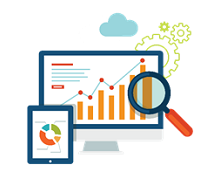Rasta 253 rezultatai (-ų)
Skip results of view Duomenų istorijos

- Data Story
Immigration debates are often politically heated and take place in many different European countries. By using one of the following European Data Portal datasets, you will be better informed during your next conversation on the matter. Let's take a look at for instance Eurostat data published by the British Home Office. The 2010 to 2015 data allow you to find a more sophisticated perspective on...

- Data Story
A year ago, the European Data Portal launched its Beta version. In November 2015, this version referenced 240,000 datasets and had metadata available in 3 languages. The launch was accompanied by the publication of a report assessing the economic benefits of Open Data and an overview of the state of play of Open Data in Europe. Because this is what the European Data Portal is all about: creating...

- Data Story
Police sirens, cars accelerating. A major source of the noise you hear comes from traffic passing by. But how loud are these sounds exactly? And how is noise pollution different in various parts of the city or region? European Open Data Portal datasets tell you the answers on these questions for several countries. This article highlights four country examples. The city of Dublin (Ireland) has...

- Data Story
In the last 12 months Open Data achieved more and more attention and European countries were racing to the top in terms of Open Data maturity. Numerous Open Data portals are being developed across Europe and are increasingly backed up by national policies from governments prioritising Open Data in their political agenda. This stronger focus also opened a broader research perspective. Open Data is...

- Data Story
Migration has occurred for centuries and impacted the world as we know it today. In the past years, migrants have been heading to Europe due to for example political instability in their home country. By looking at five European countries with migration and immigration data, more insights in these demographic trends can be given. Every year, the Dutch government releases a report on the Migration...

- Data Story
Using sustainable and green energy sources can contribute to the preservation of the planet. Until now, European consumers and industries are still dependent on fossil fuels, such as oil, gas and coal. Renewable energy is a sustainable alternative for using fossil fuels and can be generated from the sun, wind, water, earth warmth and biomass. Several European countries that work with these...

- Data Story
Open Data Portals are a critical part of our data infrastructure: they connect data holders with data users, who in turn create services that citizens and businesses benefit from and rely on. The EDP report measuring the Open Data maturity of portals across Europe 2017 shows the overall maturity of portals is increasing as they develop more advanced features. Yet most do not have coherent...

- Data Story
With Open Data on nearly all subjects, it serves as a source of information for many applications, purposes or services. These examples of Open Data re-use further emphasise, enhance the versatility and show the opportunities offered by Open Data. However despite the widespread use and diversity of Open Data applications, it can sometimes be difficult to present an interesting example of a product...

- Data Story
Rising demand for new services Every year millions of people flock to holiday areas to relax at the beach, explore nature or go sightseeing. The tourism industry has been experiencing a sustained boom for years and is continuously generating increased revenues in the holiday regions. Since digitisation does not stop at tourism, innovative solutions come into focus here as well. Data-driven...

- Data Story
Insights into a high-prioritised area Not all Open Data has the same potential for re-use. The European Data Portal provides thirteen data categories of which one is agriculture. The ever-increasing climate change has an enormous impact on flora and fauna. This results in constantly increasing heat waves during heavy rainfall at the same time. These extreme weather conditions are very difficult...
